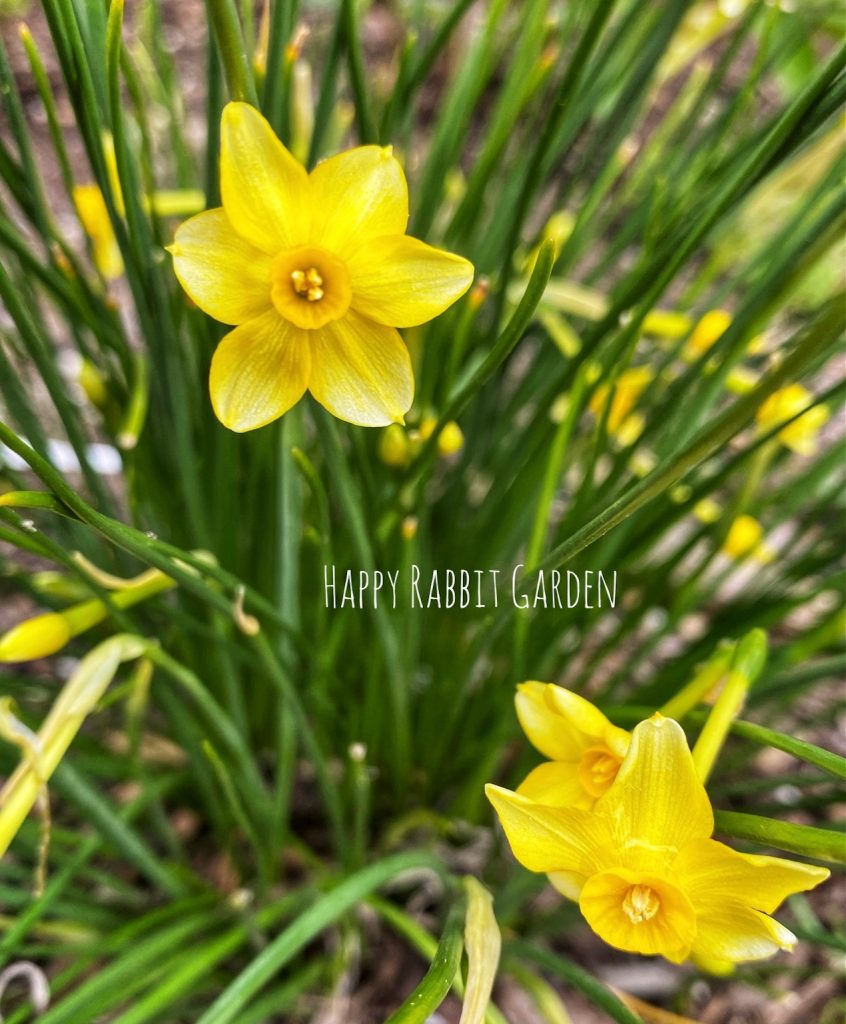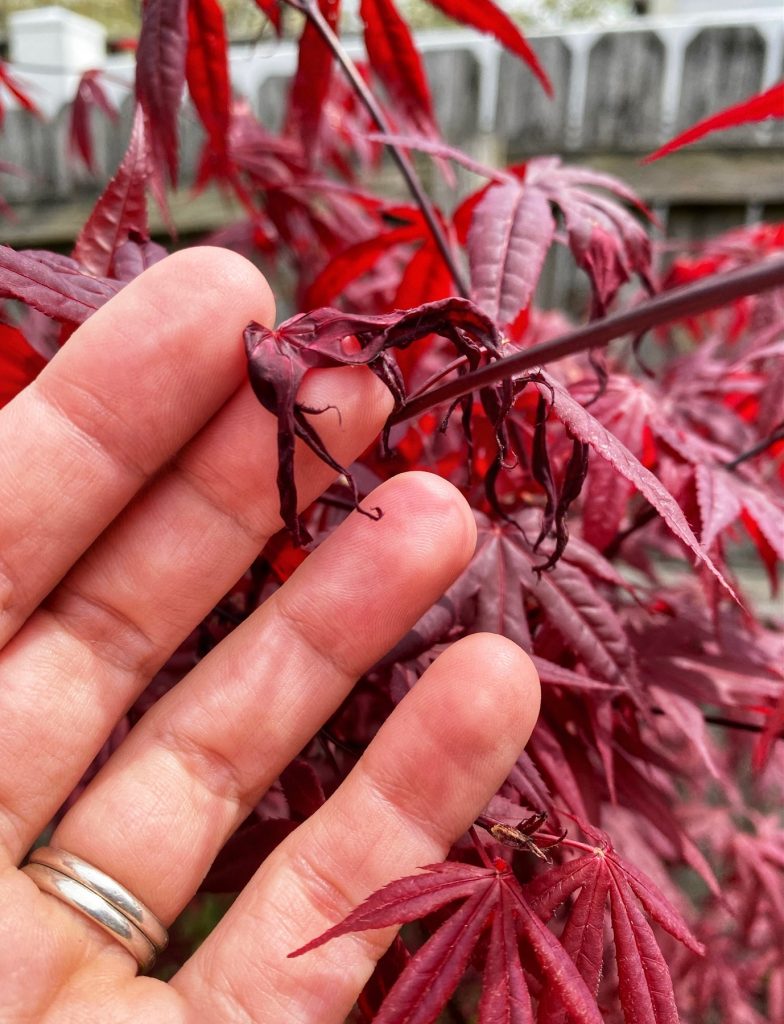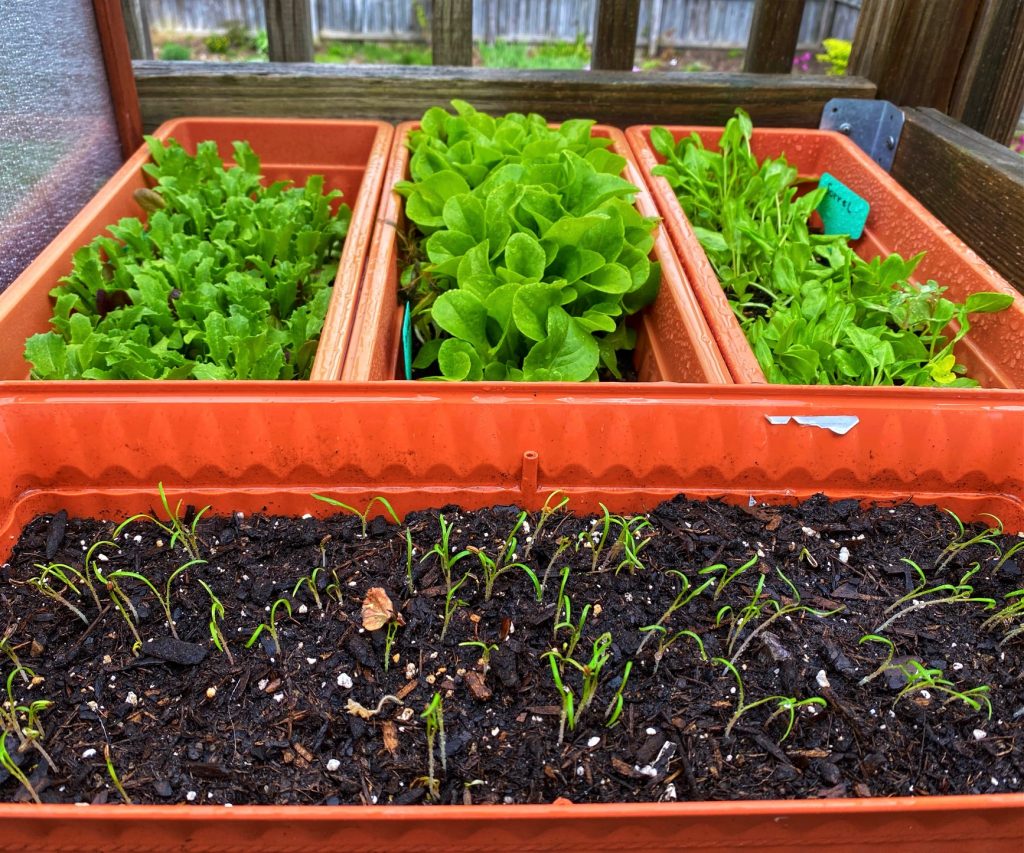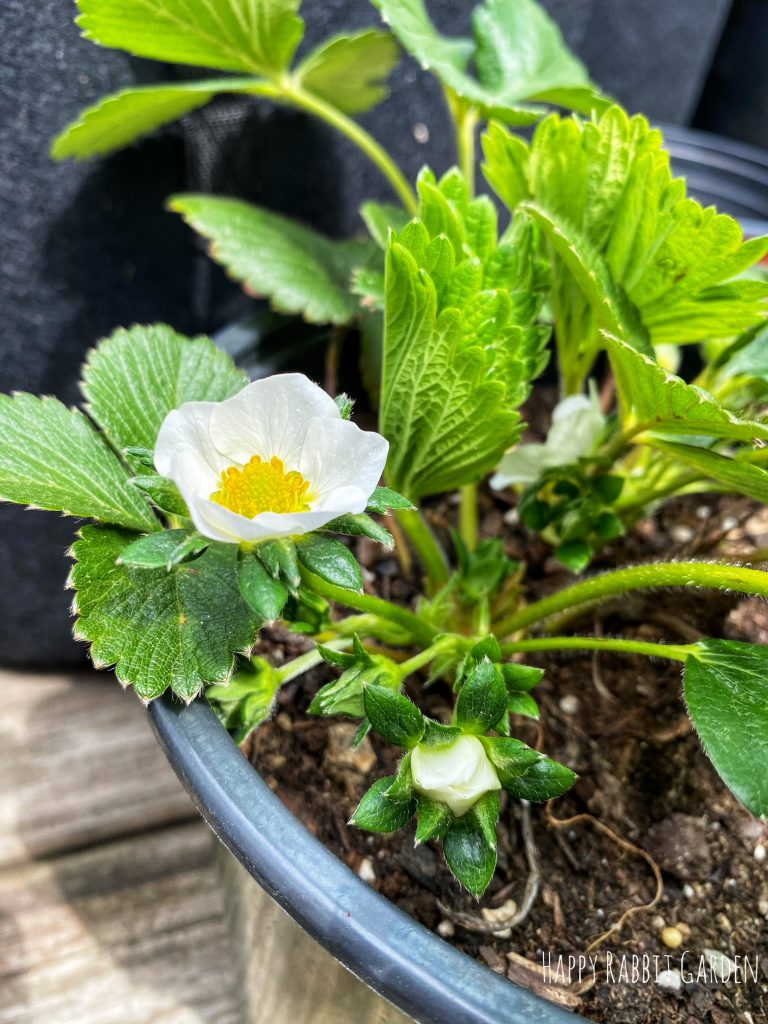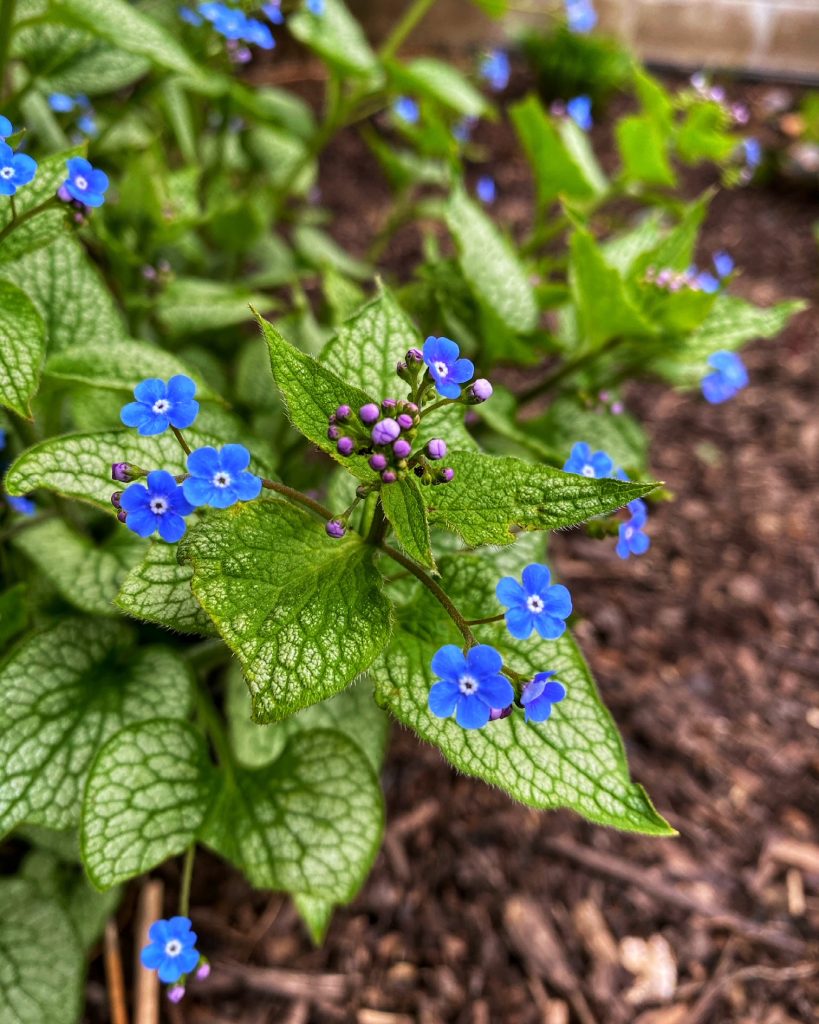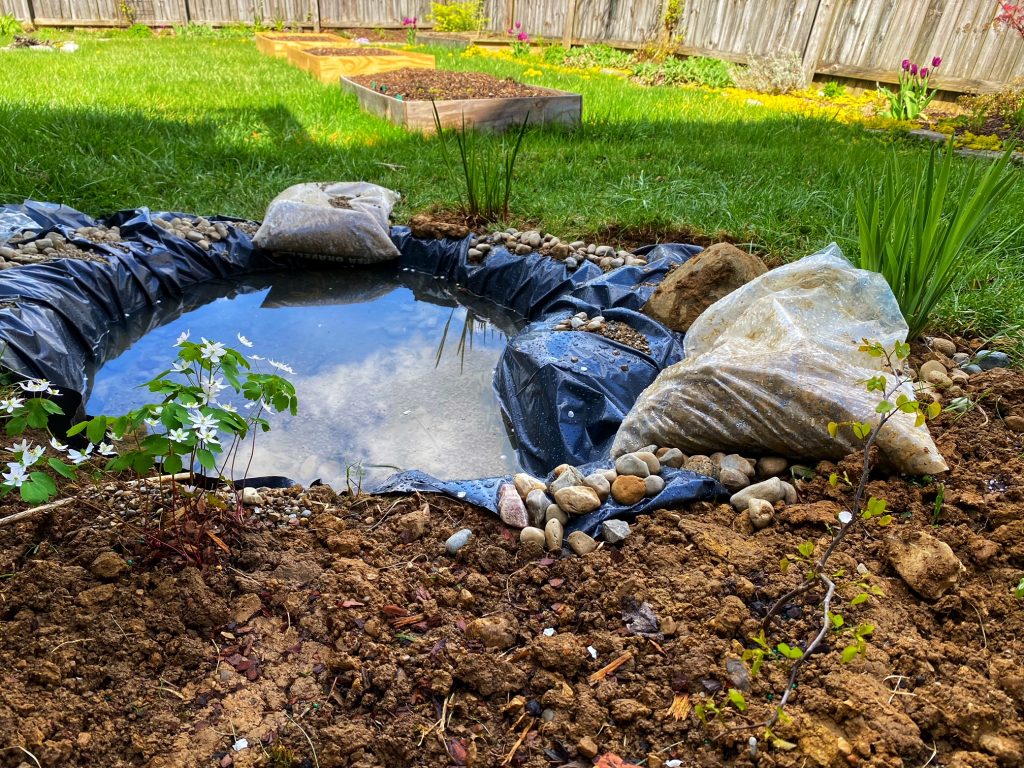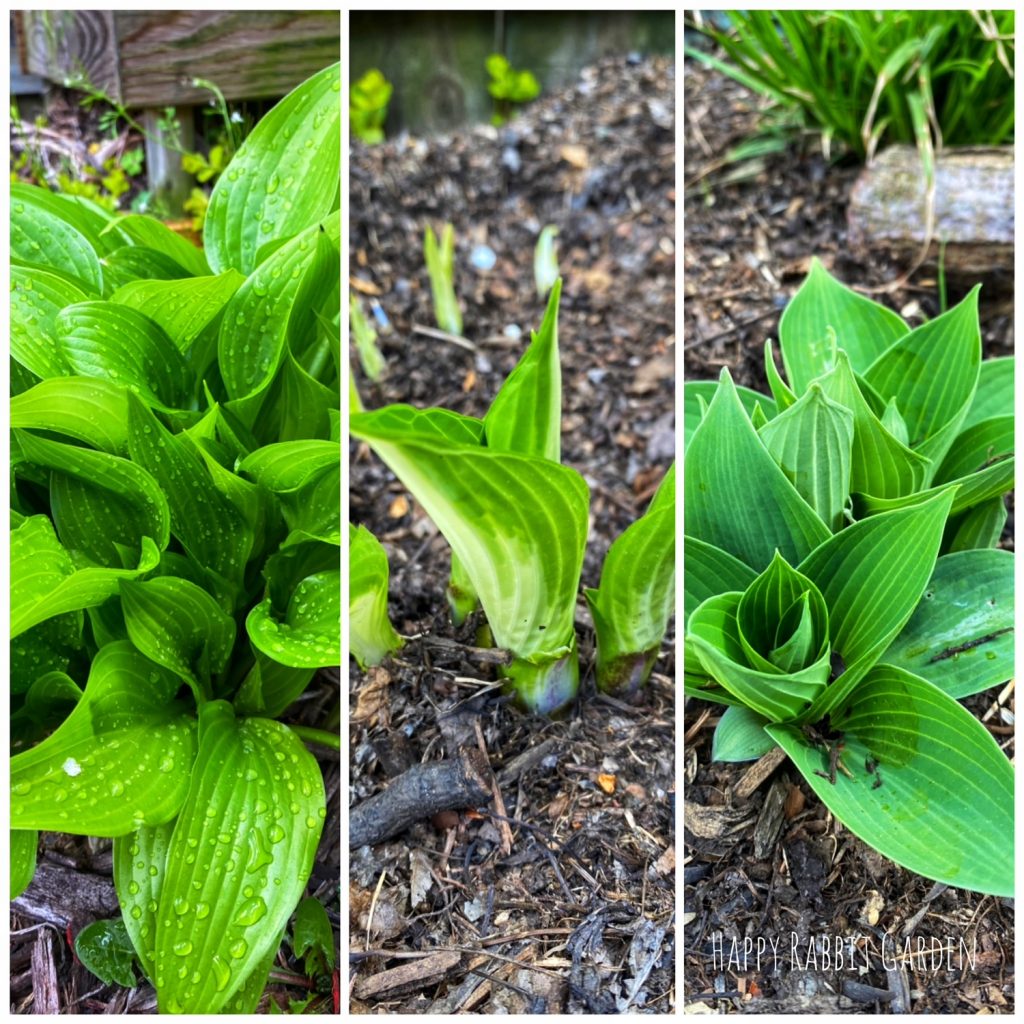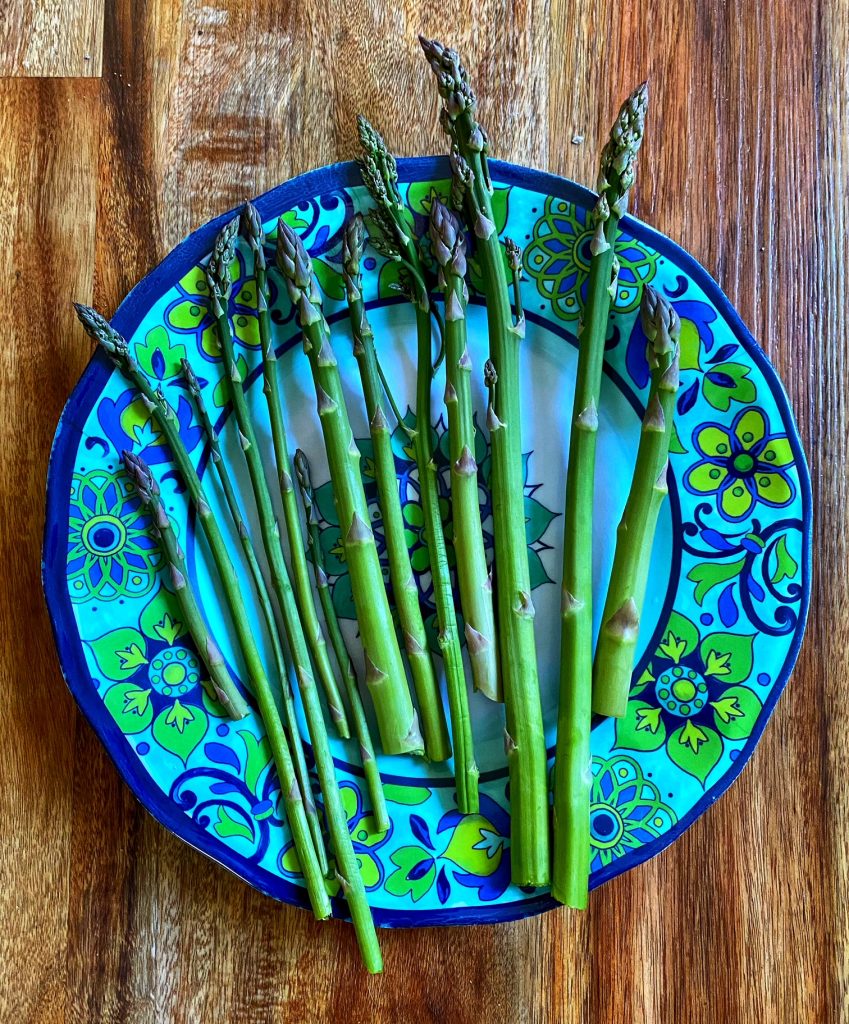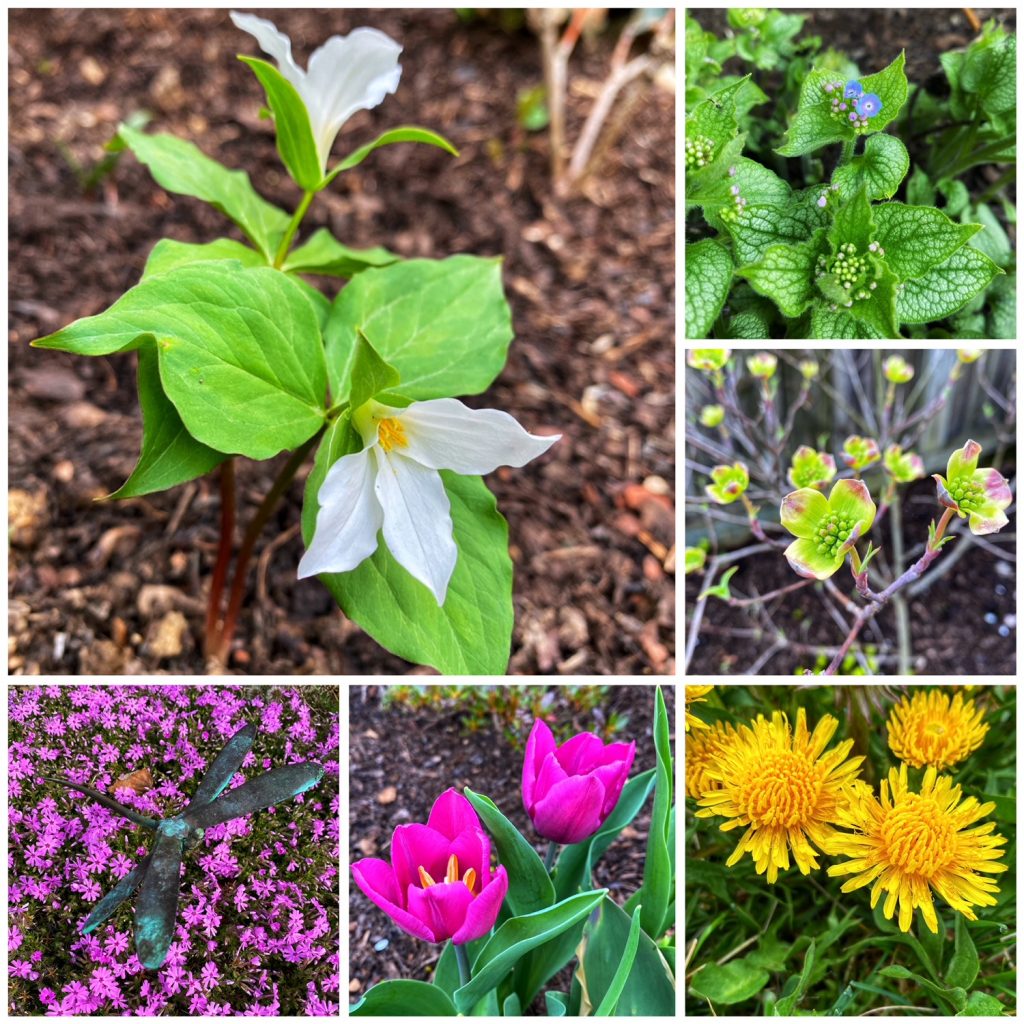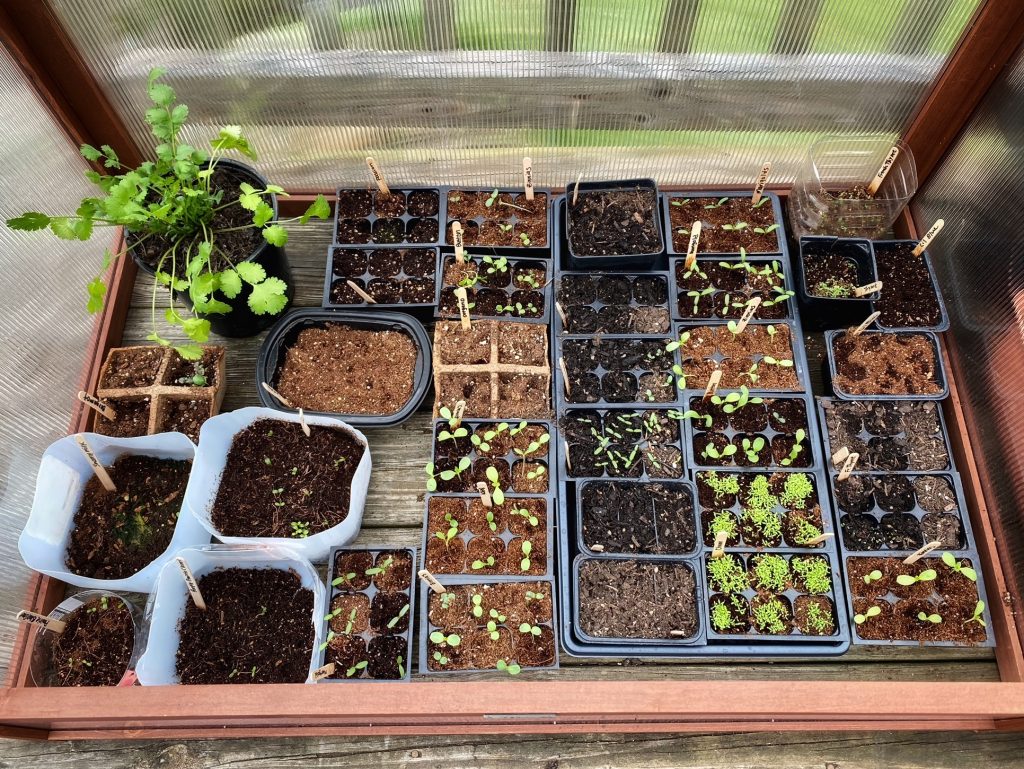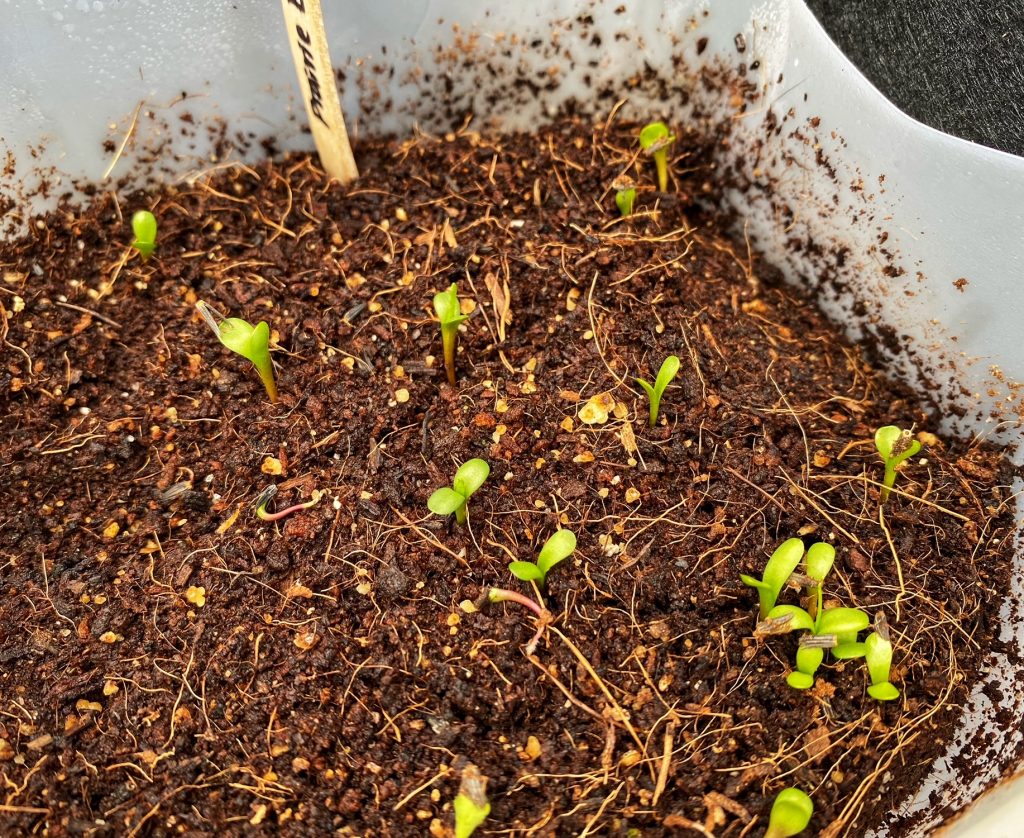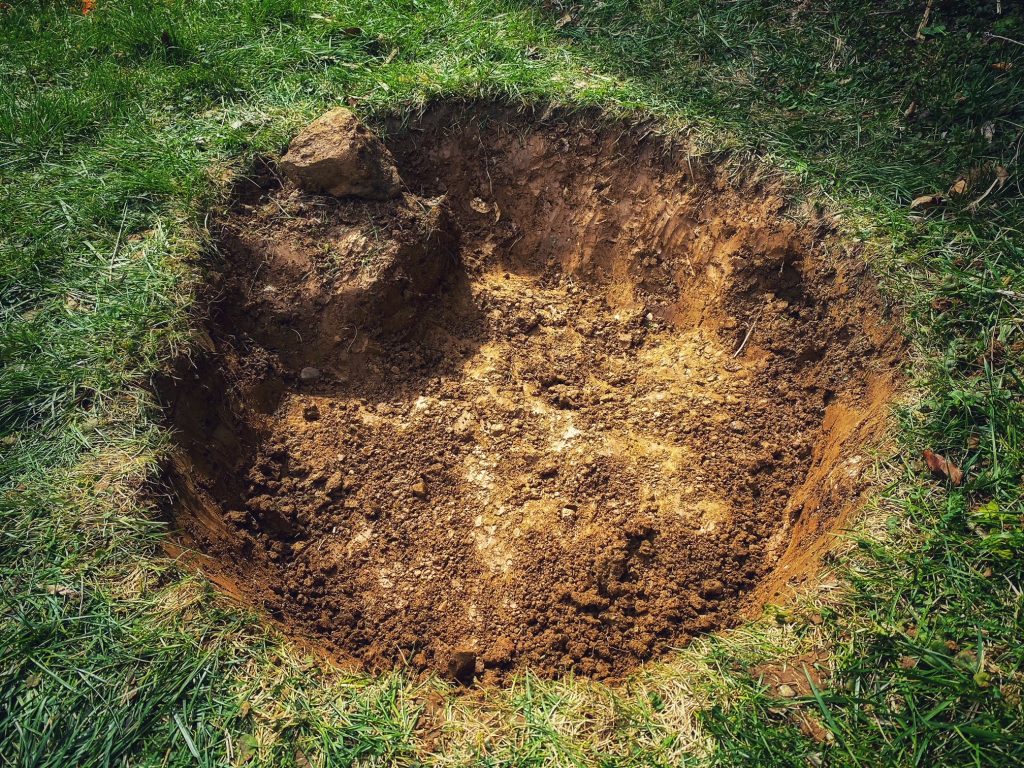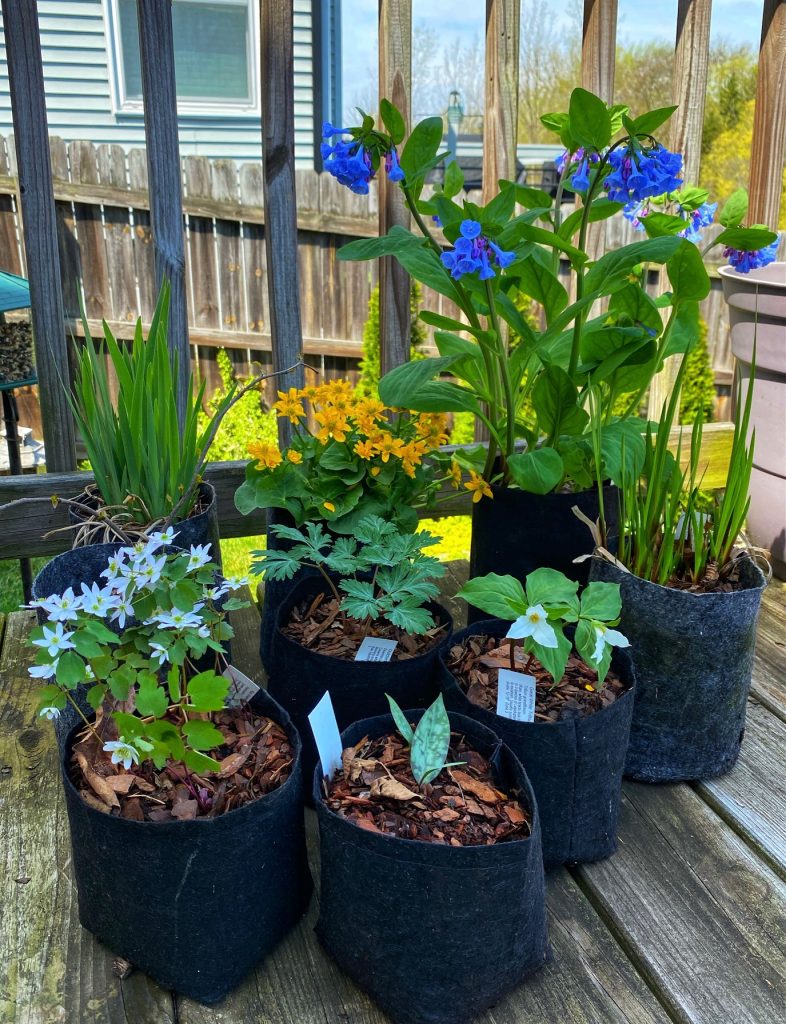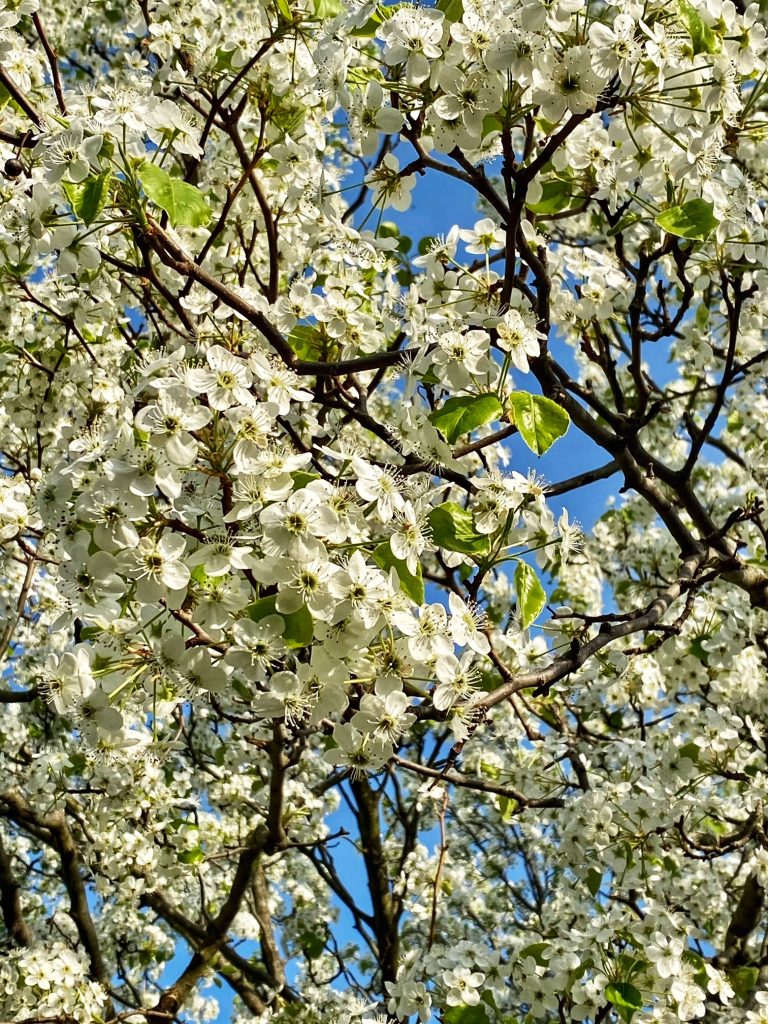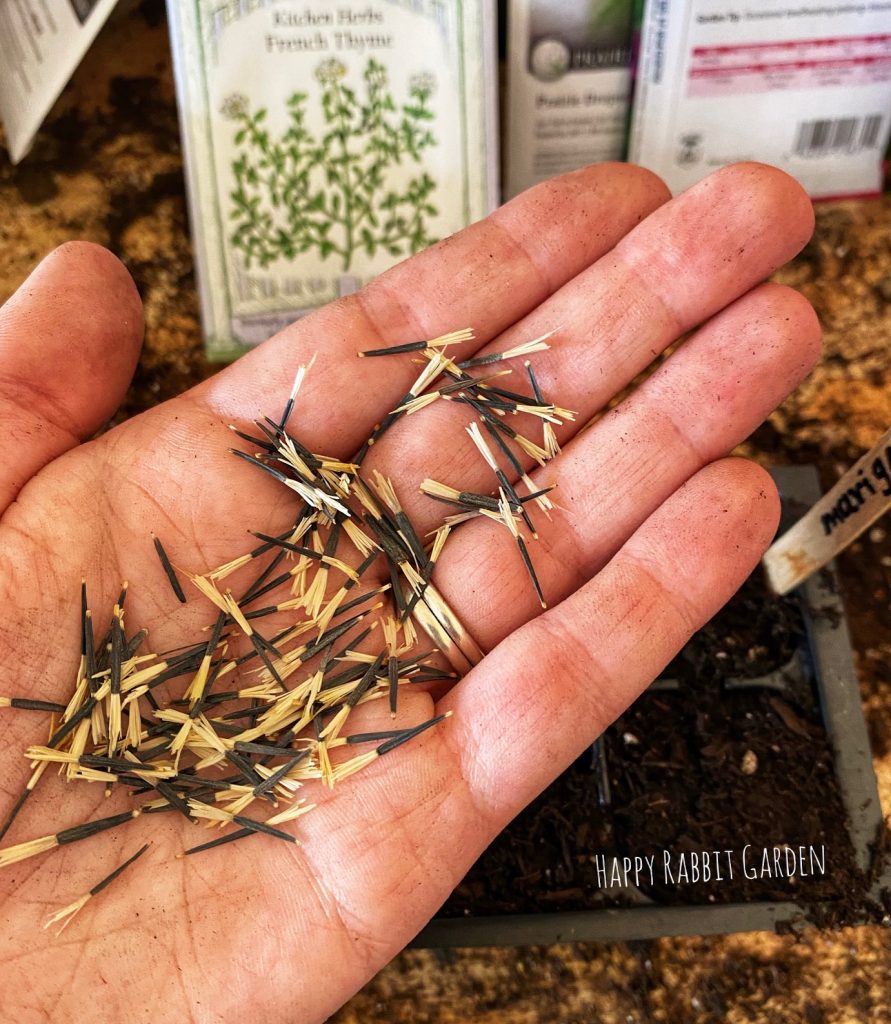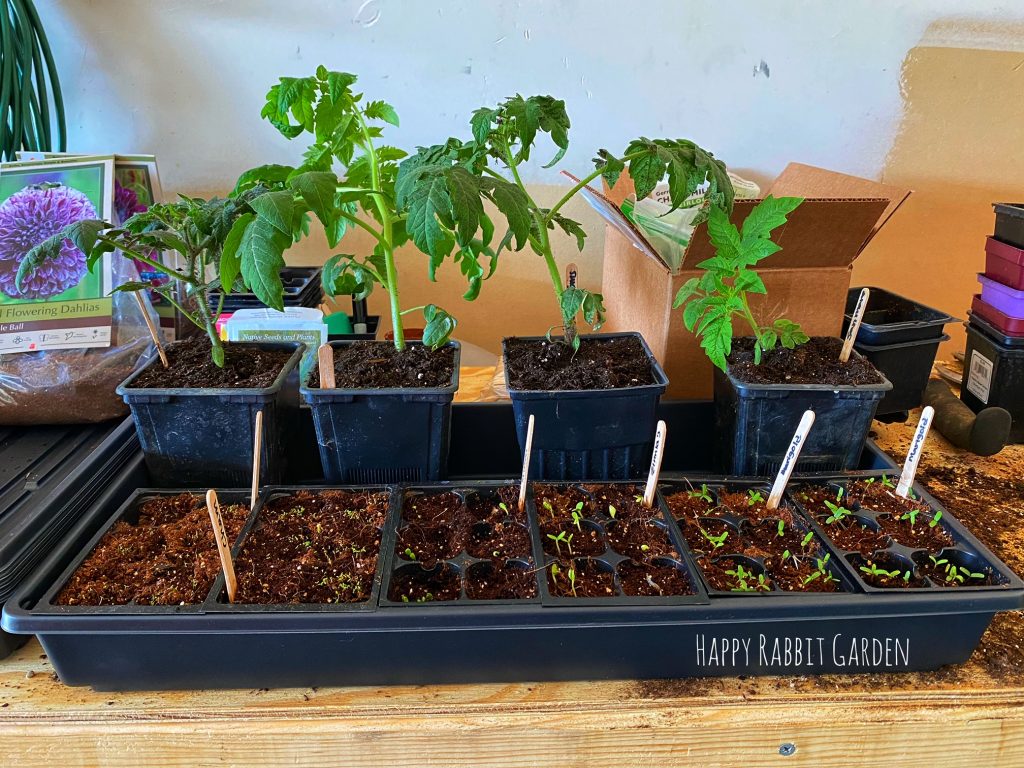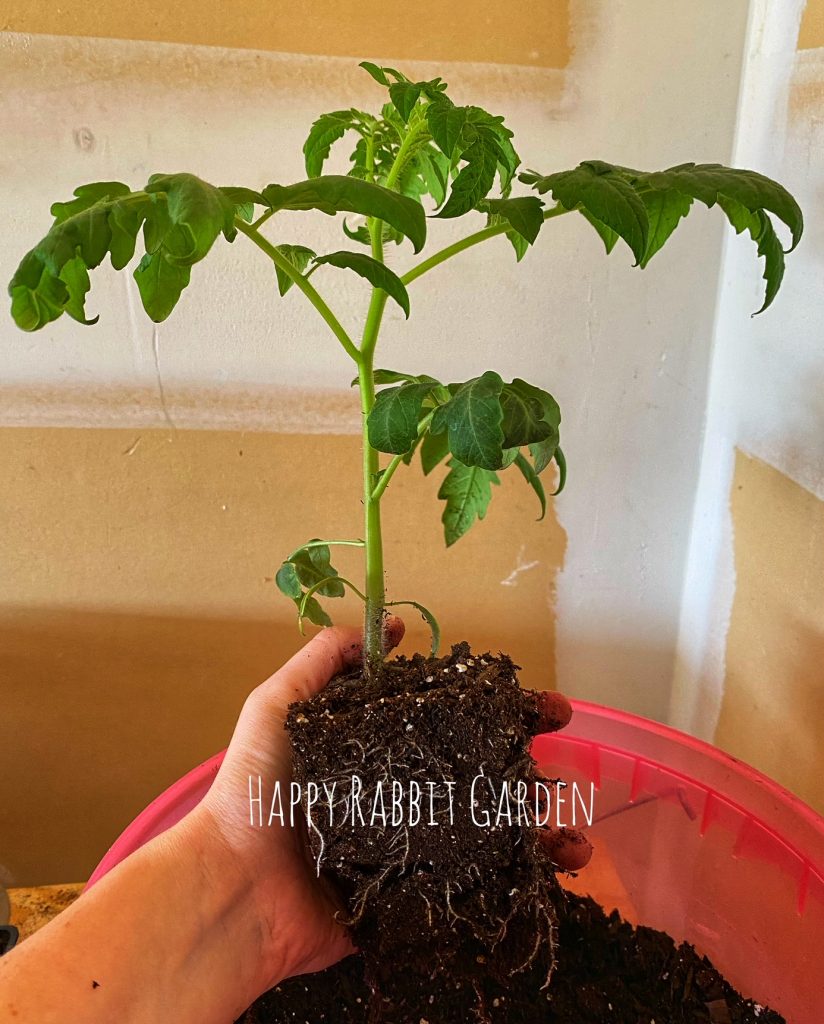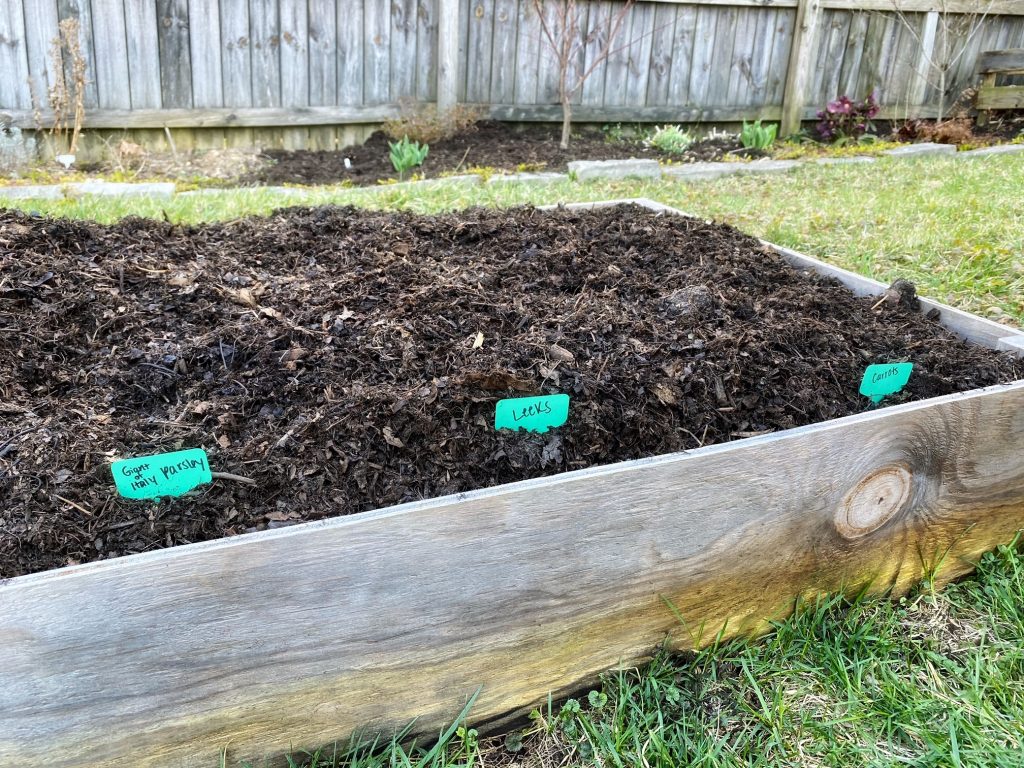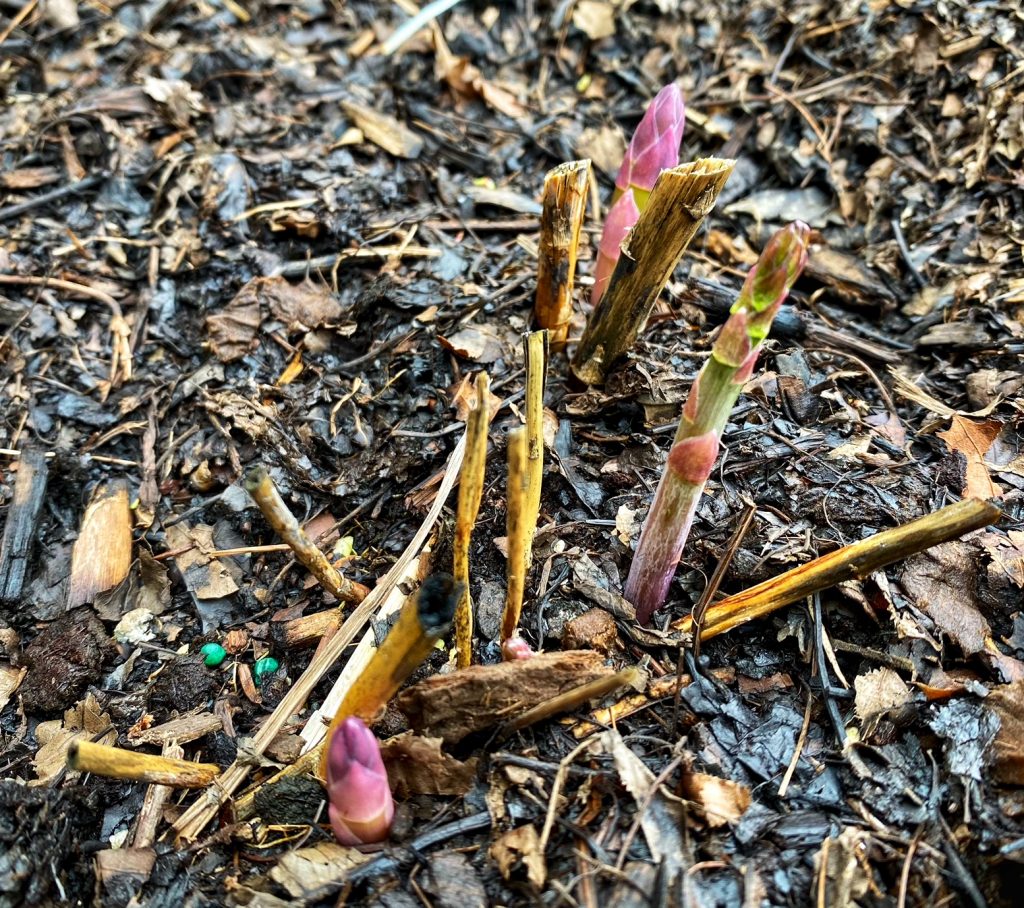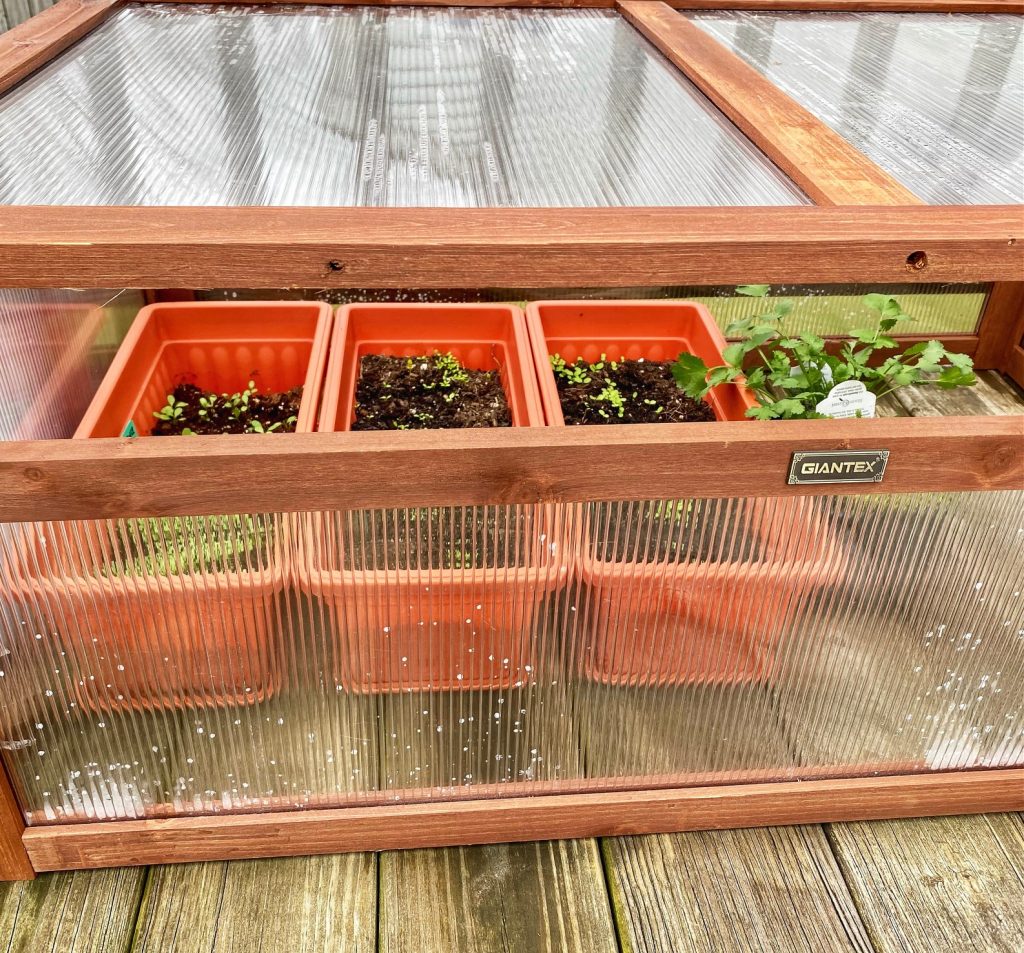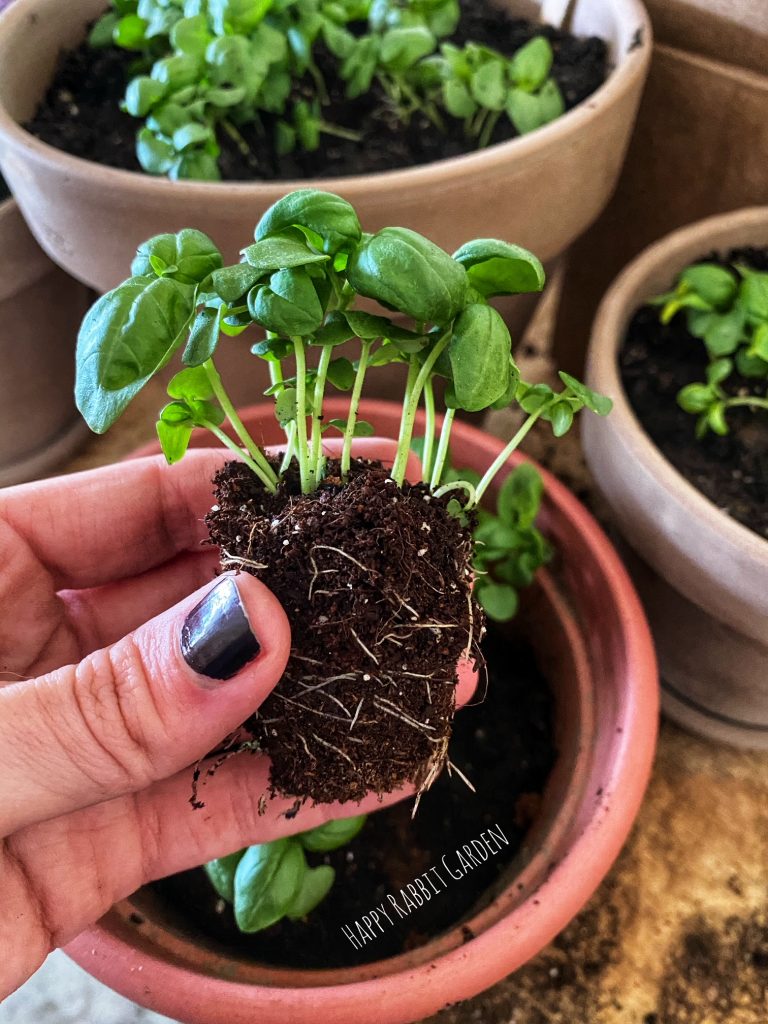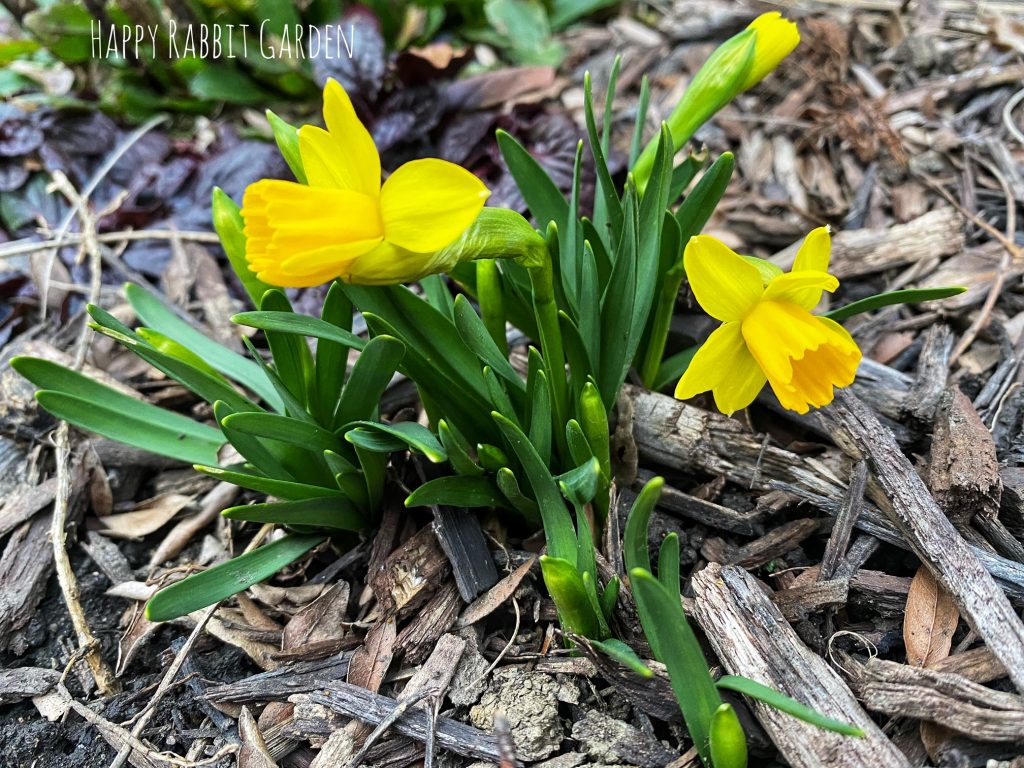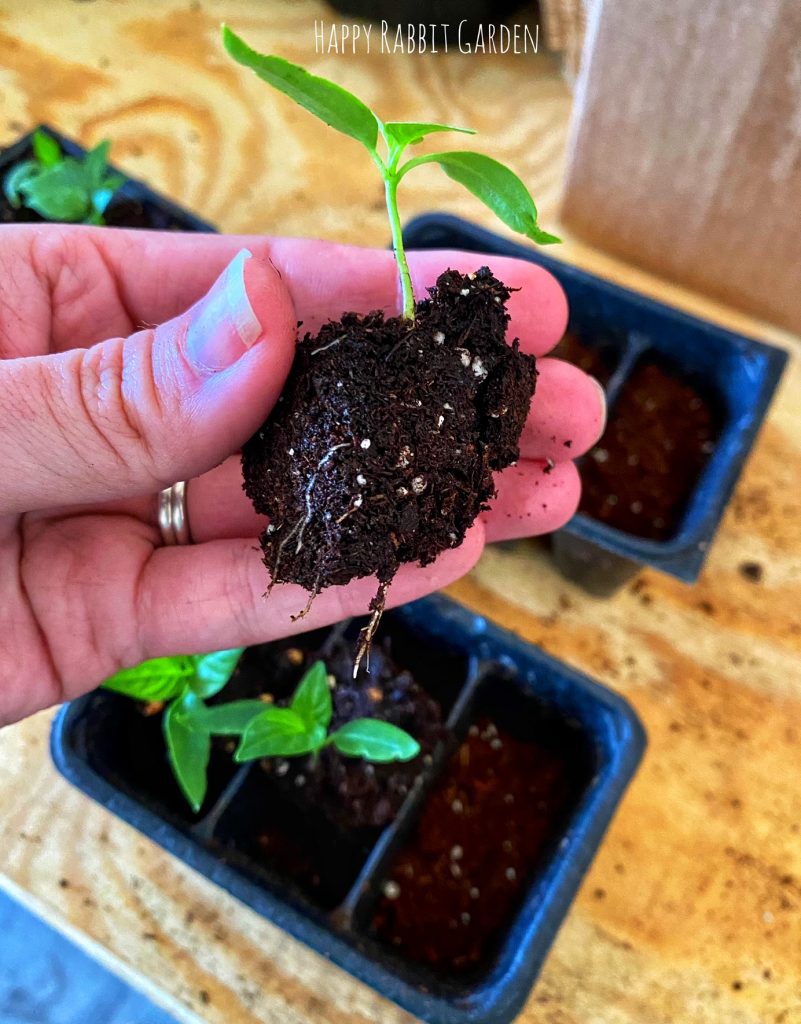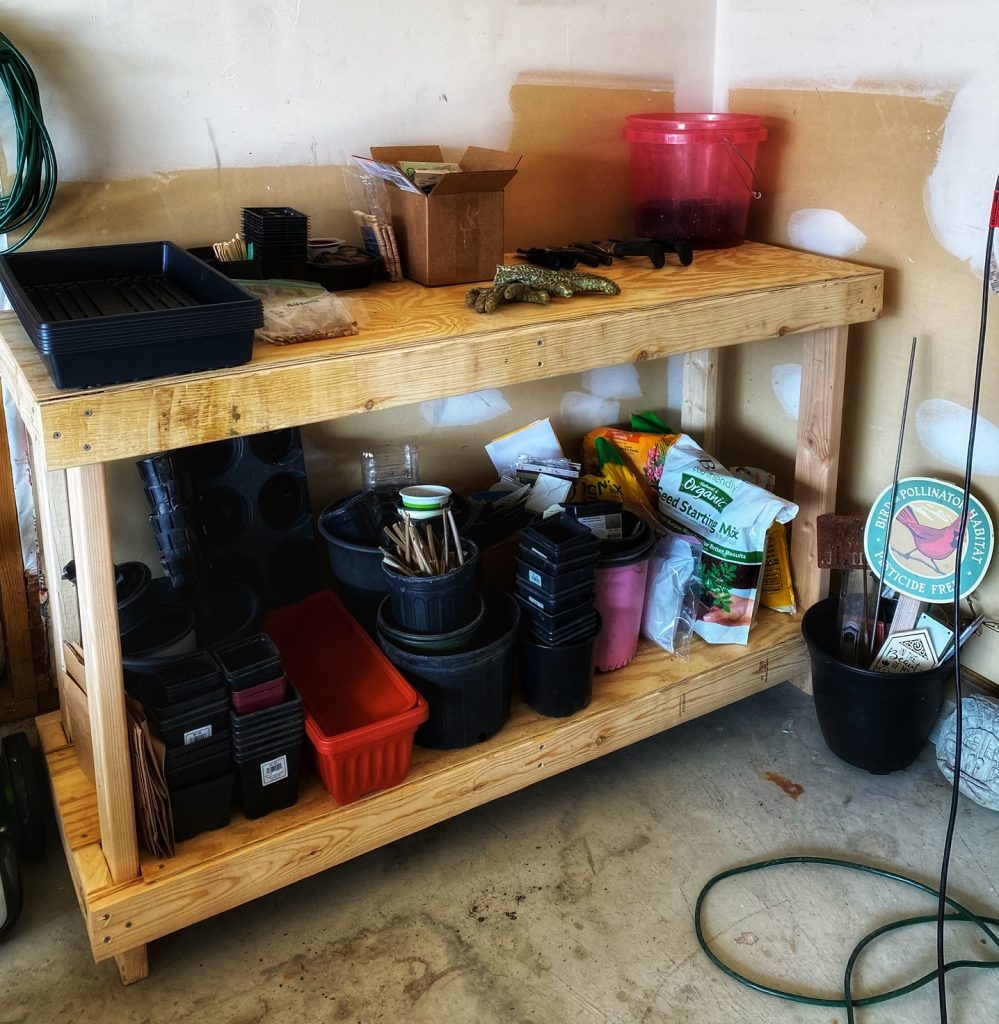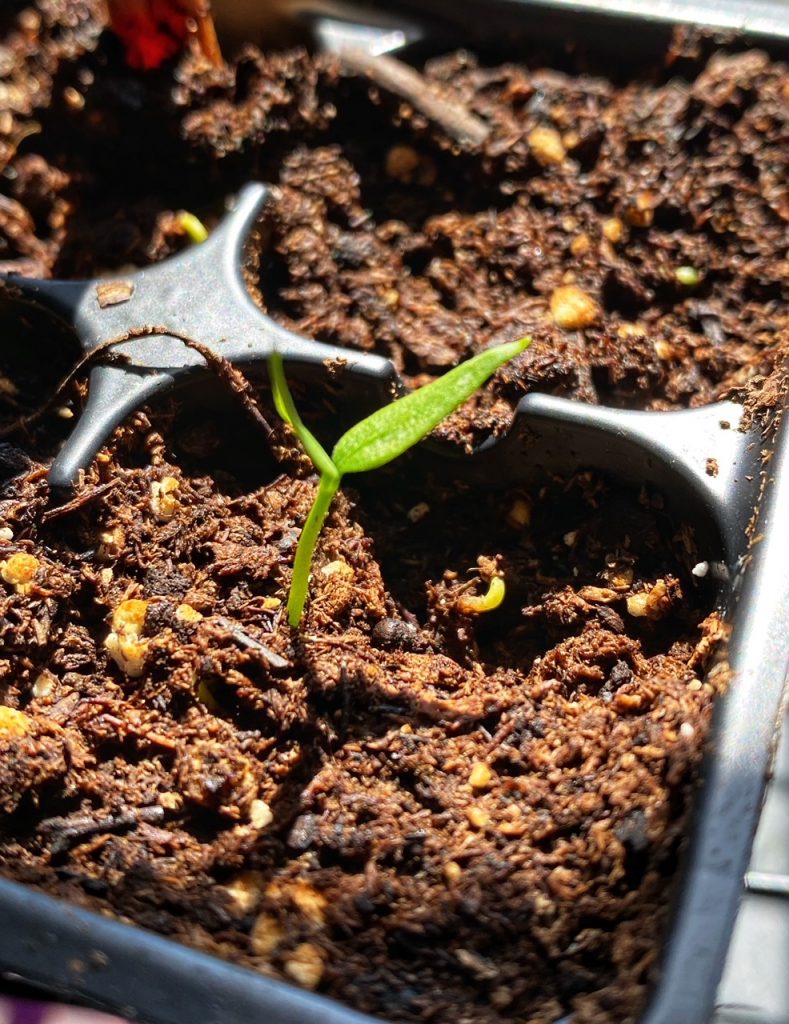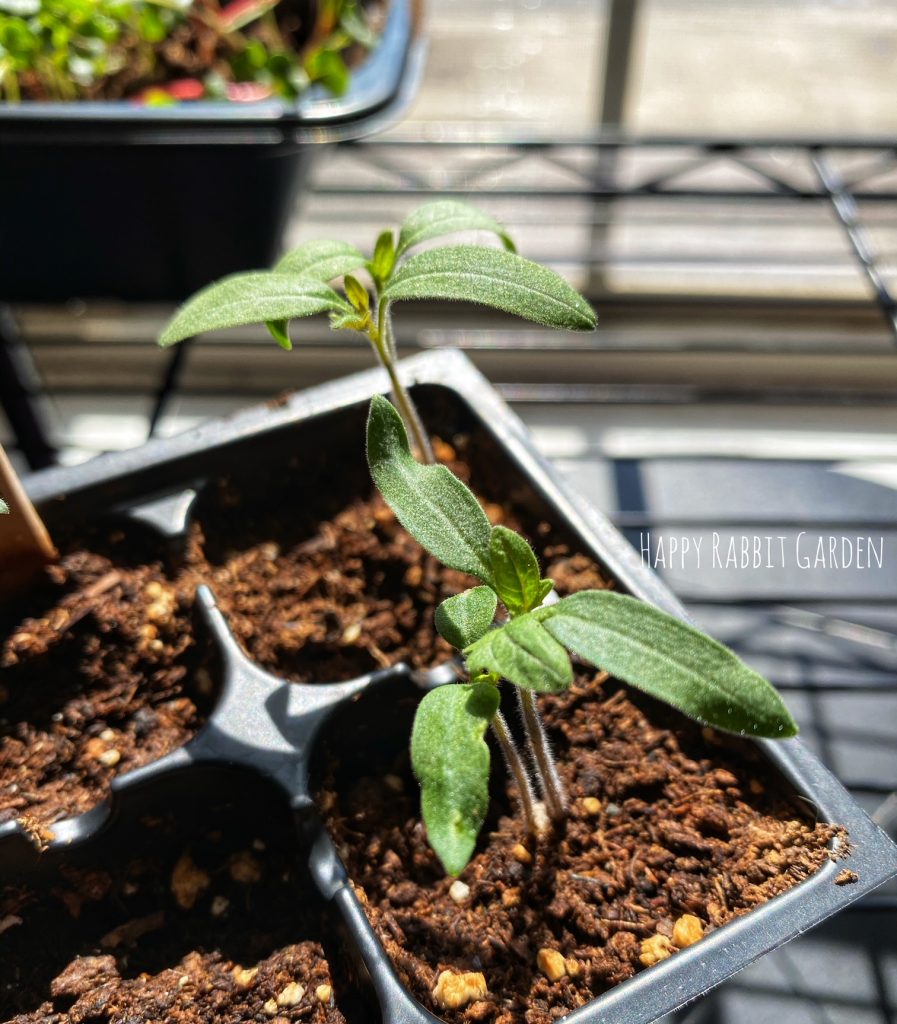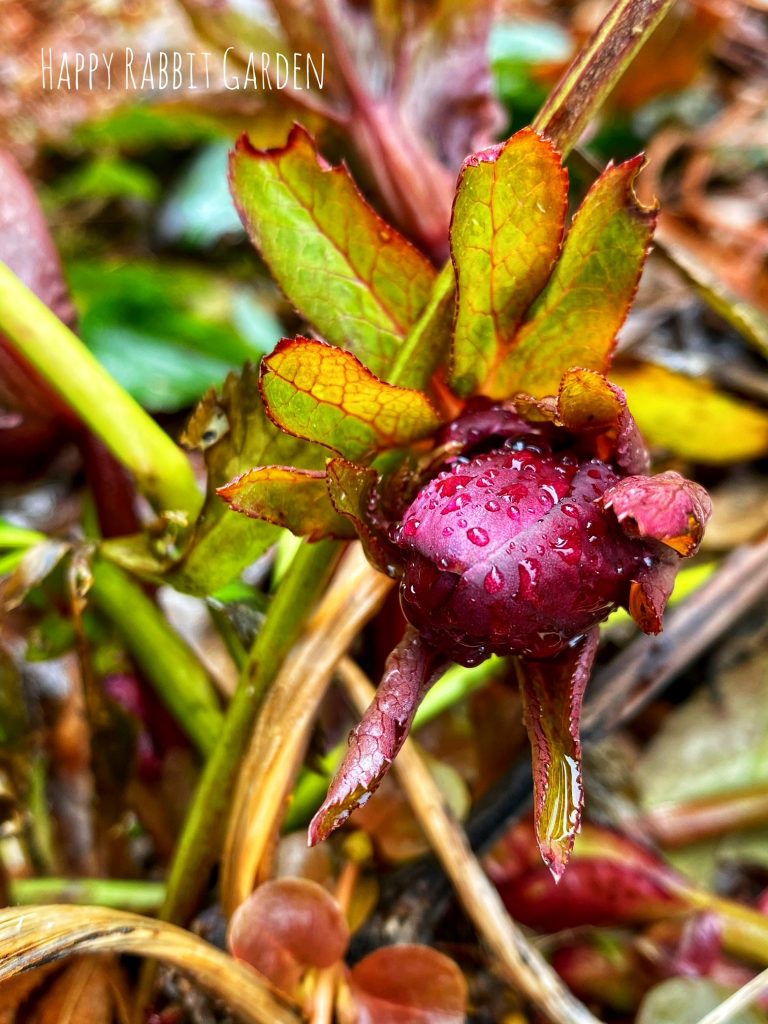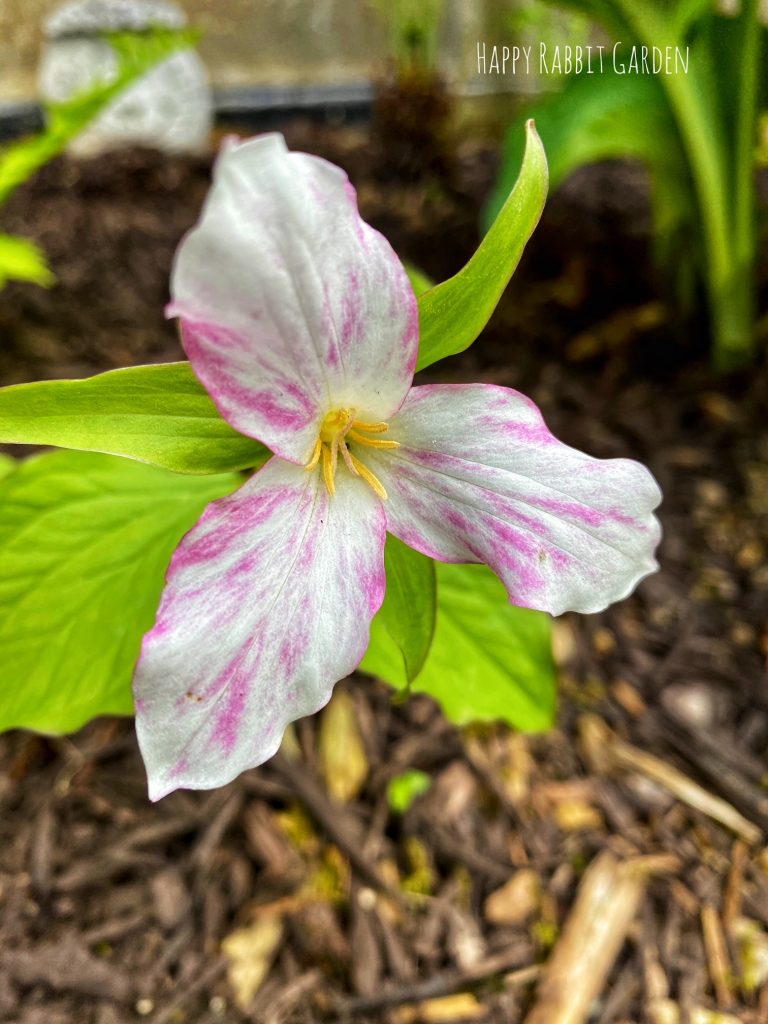We’ve made it to my favorite month in the gardening calendar. I love May. Everything is green, many of my favorite flowers begin blooming, and I can finally go hog wild, executing the gardening plans. Our last frost date isn’t technically until May 9th, but according to the weather report, we should be in the clear now. (I’m probably jinxing things… last year, we had an uber late frost, and my entire state was outside, panic-covering veggies and annuals with sheets to protect things from the cold).
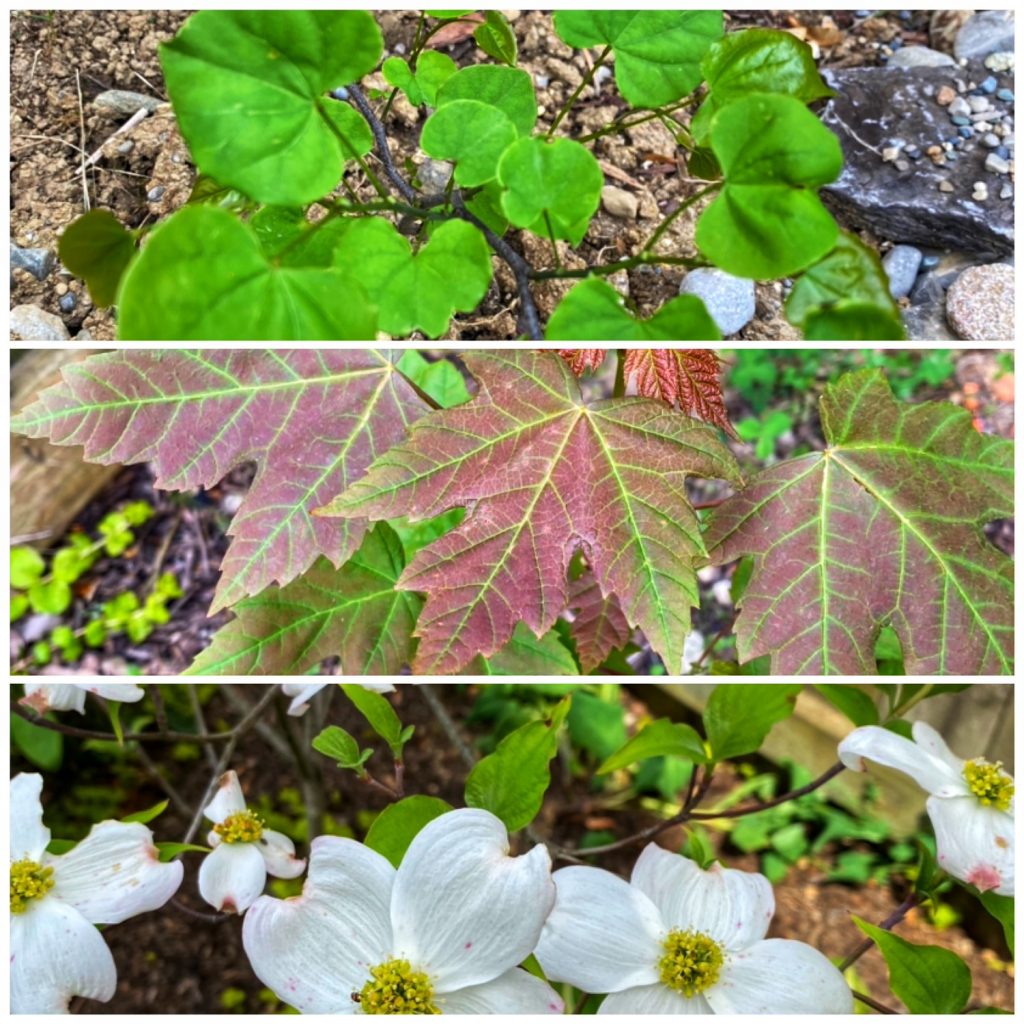
A few of our trees: eastern redbud, red maple, and flowering dogwood
I started hardening off everything that’s been living indoors last week. We’ve made it up to four hours now, over four days. I knew I’d planted a boatload of seeds, but I really do have a lot going on. I moved the grow lights down to the kitchen so I could haul all the plants inside and outside easier. (The seedlings were living on the second floor, and it took exactly one day with 11,000,000 trips up and down the stairs for me to decide that was so not continuing for the full seven days).
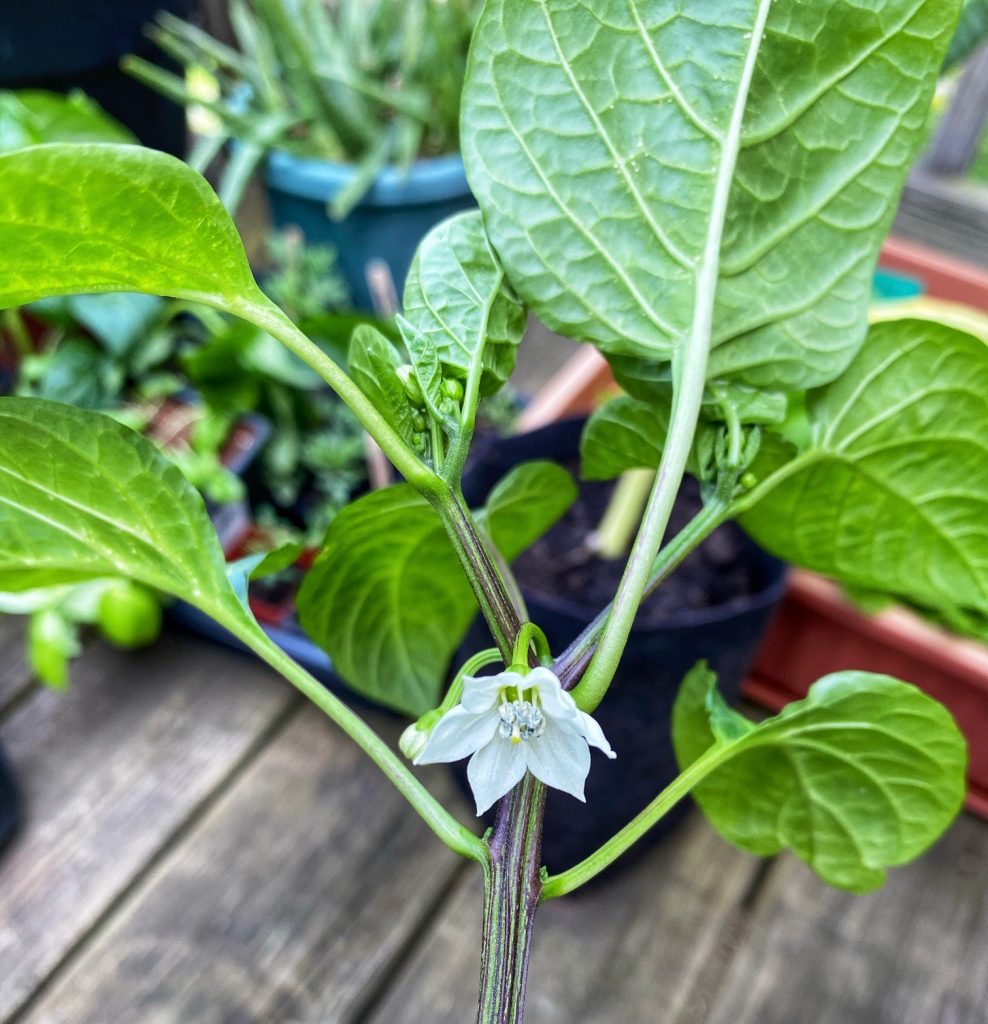
The Italian Sweet Peppers are flowering already!
The tomatoes and peppers have started to flower, which is kind of blowing my mind. I’m really excited to get these plants into the ground. I also have rosemary, basil, and parsley hardening off, as well as our lemon tree, a (newly arrived) dwarf banana tree, some madder, the ginger and pineapple plants that I started over the winter, some geraniums, and an amaryllis bulb.
The deck is starting to fill up with pots as well. The potatoes I planted have sprouted, and I just potted up the canna and cala lily bulbs that we grew last year. (They were living in the garage over winter, dormant and just waiting for warm days again). I have two pots of dahlias growing this year, well, they are just tubers now, but hopefully, they will sprout soon. And, there’s cilantro, two pots of lettuces, sorrel, fennel, a bay laurel, strawberries, tulips, aloe, mint, and some swamp milkweed. How’s that for variety? The cold frame is basically permanently opened up now so the seedlings don’t overheat and burn, and it’s housing the dropseed, little bluestem, prairie blazing star, zinnias, marigolds, milkweed, bachelor button flowers, borage, thyme, more parsley, oregano, passion flowers, and german chamomile. Things should be large enough to plant out soon here.
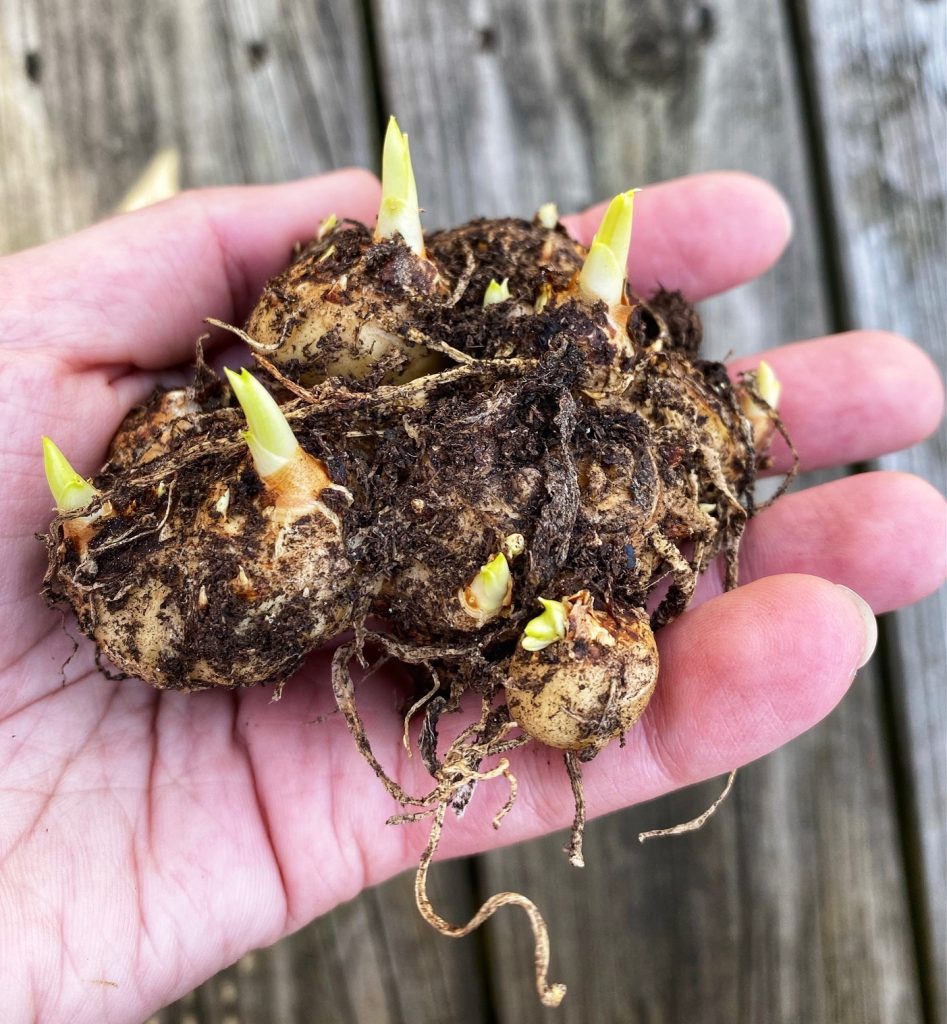
The calla lilies are growing again and ready for planting. I promise, the flowers look better than the rhizomes here would suggest.
Last fall, after the sunflowers had finished their display, I harvested a few of the seeds to plant this year. I’ve been doing this for a few years now, with nice results. I have Mammoth Sunflowers, and some Autumn Beauty, and I planted both varieties out in the beds this weekend. They both grow quite tall, so I plant them along the fence. I love when they bloom in late summer- they are so cheery, and the bees really enjoy them.
Out in the garden, things are beginning to really fill in. While not even close to it’s full volume, I’m very pleased with our first shade bed. It’s packed full of hostas, ferns, heucheras, great white trilliums, dutchman’s breeches, sedum, creek sedge, hardy geraniums, a rhododendron, hellebores, crocuses, brunerra, speedwell, and along the front edge, by the birdfeeders, are dozens of little sunflower seedlings sprouting up. The birds shake the seeds out of the feeders, and I just let the sunflowers grow, thinning them out a little for healthier plants. It’s not the ideal placement for tall plants- right at the front of a bed- but the flowers the birds grew last year were so pretty. I’m really a sucker for sunflowers, wherever they may grow.

The shade garden is popping back up and filling in quickly this spring.
I set up a little pot again this year in that flower bed, filled with some rocks and water for the birds and bugs to enjoy. It was a hit last year, basically a little bird bath, so I thought I’d give it a go again. The dragonflies really seem to enjoy the water features, too, and with the way they devour mosquitoes (an adult dragonfly can eat hundreds of those bloodsuckers per day), I am about anything that lures them into our garden.

Some of the sunflower seeds from last falls harvest
This week, we’re expecting quite a bit of rain, but hopefully, once that clears out, I can start in on the next big gardening project: pulling out the sod in the front yard between the sidewalk and the street (the hellstrip). Quite a few of the plants for that project are still growing in the cold frame now, and the other half are things I plan to split from perennials we have around the yard already. Pulling up grass is a pain, literally, but it’s the necessary first step. Any time I can get rid of more grass in our yard is a good time in my book. Once the grass is out, I can plant the new bed, get it mulched, and the next pollinator garden will be in business.
Hope the week is warm and sunny where you are, and that you can spend some time relaxing around all the new spring life outdoors. Happy gardening!
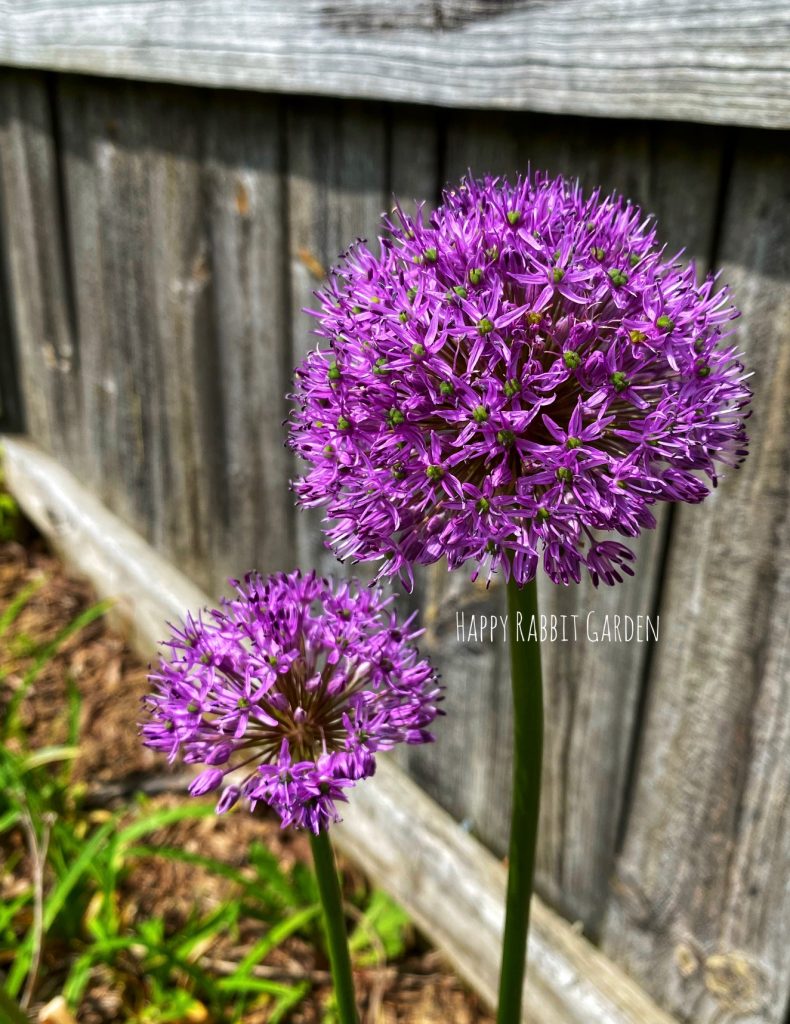
Our Giant Allium is blooming. I love these wild little balls of flowers, and I saw quite a few bees enjoying them over the weekend, too.

